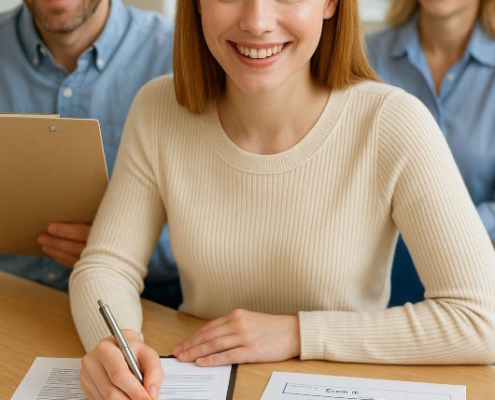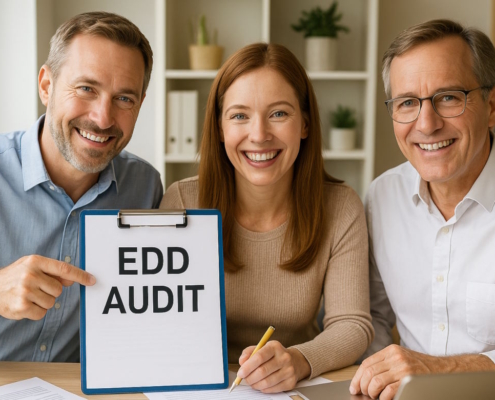Introduction
A caregiver employed in home care initiated a formal complaint with the office of the Labor Commissioner, alleging that they had not received compensation for their services provided from August 23 to September 15, 2017. The caregiver sought not only the payment of these overdue wages but also additional compensation as mandated by law for the distress and inconvenience caused, alongside fines for the delay in payment. (Case: Rodgers v. Whitehead, 2019 Cal. Super. LEXIS 29736)
This scenario underscores the rights caregivers have to pursue unpaid wages, additional legal remunerations, and penalties for late payments, highlighting the legal avenues available for them to seek justice and fair compensation.
If you have questions concerning your situation as a caregiver, please contact our lawyer for caregivers in California.
Facts
A Patient, who was receiving benefits from the In-Home Supportive Services (IHSS), hired a caregiver through the IHSS system starting August 20, 2017, to work at her home in Oakland, California, for $12.50 an hour, three days a week from 10:00 a.m. to 2:00 p.m. The Home Caregiver, who is the plaintiff in this case, kept track of her hours both personally and on IHSS timesheets, working a total of 44 hours from August 21 to September 15, 2017, before quitting without notice. However, the Home Caregiver faced delays in getting her timesheets signed by the Patient and submitted for payment, which IHSS later refused, citing an overuse of The Patient’s allocated hours already paid to another caregiver.
The Patient admitted to owing the caregiver for 16 hours of work, revealing another caregiver had fraudulently claimed payment for the same period. Despite this, the Home Caregiver had not been paid for her work. The Patient acknowledged signing the timesheets under pressure and later attempted to correct the record with IHSS. An IHSS official confirmed the Home Caregiver’s unpaid work and the fraudulent activities of the other caregiver, noting a pending payment to the caregiver for the acknowledged hours. This situation highlighted issues with IHSS’s payment system, which pays timesheets as they are received up to the recipient’s monthly allotted hours, leading to the caregiver’s unpaid work due to prior claims by another caregiver.
Caregivers Law
In evaluating whether The Public Authority for In Home Support Services, the Social Services Agency, and the County of Alameda in California collectively acted as joint employers for the purpose of a plaintiff’s wage claims, the pivotal legal precedent is the case of Guerrero v. Superior Court (2013) 213 Cal.App.4th 912. This case established that both the County and the IHSS Public Authority could be held accountable as joint employers under the guidelines of Industrial Welfare Commission Wage Order 15, aligning with the decision of the California Appellate Court.
The definition of an employer, according to the Industrial Welfare Commission (IWC), encompasses three distinct criteria: (a) exerting control over the wages, hours, or working conditions; (b) allowing or permitting work to occur; or (c) engaging workers, which establishes a common-law employment relationship, as detailed in Martinez v. Combs (2010) 49 Cal.4th 35, 231.
The County of Alameda’s Social Services Agency, through its IHSS program, plays a crucial role in determining a recipient’s eligibility for services, authorizes the hiring of household workers, specifies permissible tasks, and oversees payment processes. The IHSS program’s comprehensive involvement includes managing timesheets and resolving payment disputes, thereby exerting significant influence over the working conditions and compensation of household workers.
The Public Authority, designated as the employer for collective bargaining purposes, sets the wage rates for IHSS services and facilitates the matching of providers with recipients. This includes vetting potential providers and offering training, thereby establishing a critical role in shaping the employment landscape within the IHSS program.
The Guerrero case thoroughly examined the roles of the County and Public Authority as employers, concluding that their control over financial and operational aspects of the employment relationship meets the criteria for employer liability for unpaid wages, as set forth in Martinez v. Combs. This finding underscores the entities’ responsibility in supervising and controlling work conditions and schedules.
In light of Guerrero’s application, it is determined that the defendants—The Public Authority for In Home Support Services, Social Services Agency, and County of Alameda—are indeed joint employers with Ouida The Patient, who directly controlled the plaintiff’s work hours and conditions. As a result, all defendants may be held jointly liable for any due wages.
The defendants are obligated under Industrial Welfare Commission Order 15-2001 and Labor Code Section 510 to ensure payment of at least the minimum wage for all hours worked. This includes maintaining accurate payroll records as mandated by Wage Order Section 7 and Labor Code Section 226, which require detailed itemization of wages and work periods.
Analysis
In this case, the absence of precise record-keeping by defendant The Patient and the disputed accuracy of timesheets submitted highlight the challenges in determining the actual hours worked by the plaintiff. The legal framework allows for an estimation of work hours in situations where employers fail to maintain adequate records, shifting the burden to the employer to disprove the employee’s claims or justify the recorded hours, as noted in Hernandez v. Mendoza (1988) 199 Cal.App.3rd 721, 727 and supported by Anderson v. Mt. Clemens Pottery (1946) 328 U.S. 680.
The evidence suggests the plaintiff worked a total of 47 hours without compensation, despite available hours allocated for her services. The defendants’ liability for unpaid wages is further compounded by the fraudulent submission of hours by another caregiver, underscoring the need for diligent oversight by IHSS.
Pursuant to Labor Code Section 1194.2(a), the plaintiff is entitled to liquidated damages equivalent to the unpaid wages plus interest, reflecting the violation of minimum wage laws. Additionally, Labor Code Sections 202 and 203 outline penalties for willful non-payment of wages upon termination, with specific exemptions for governmental entities like IHSS under Labor Code Section 220, indicating no penalties for immediate wage payment upon termination are applicable to them.
Ultimately, the analysis concludes that the defendants share responsibility for compensating the plaintiff for unpaid wages, alongside applicable damages and penalties, reinforcing the importance of employer compliance with wage and labor laws to protect worker rights.































